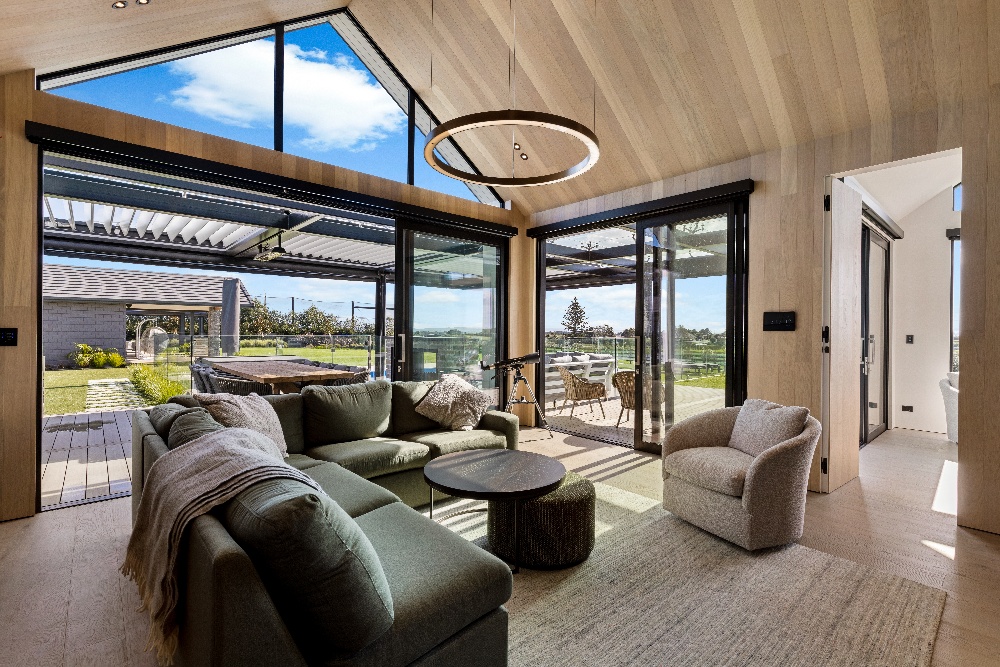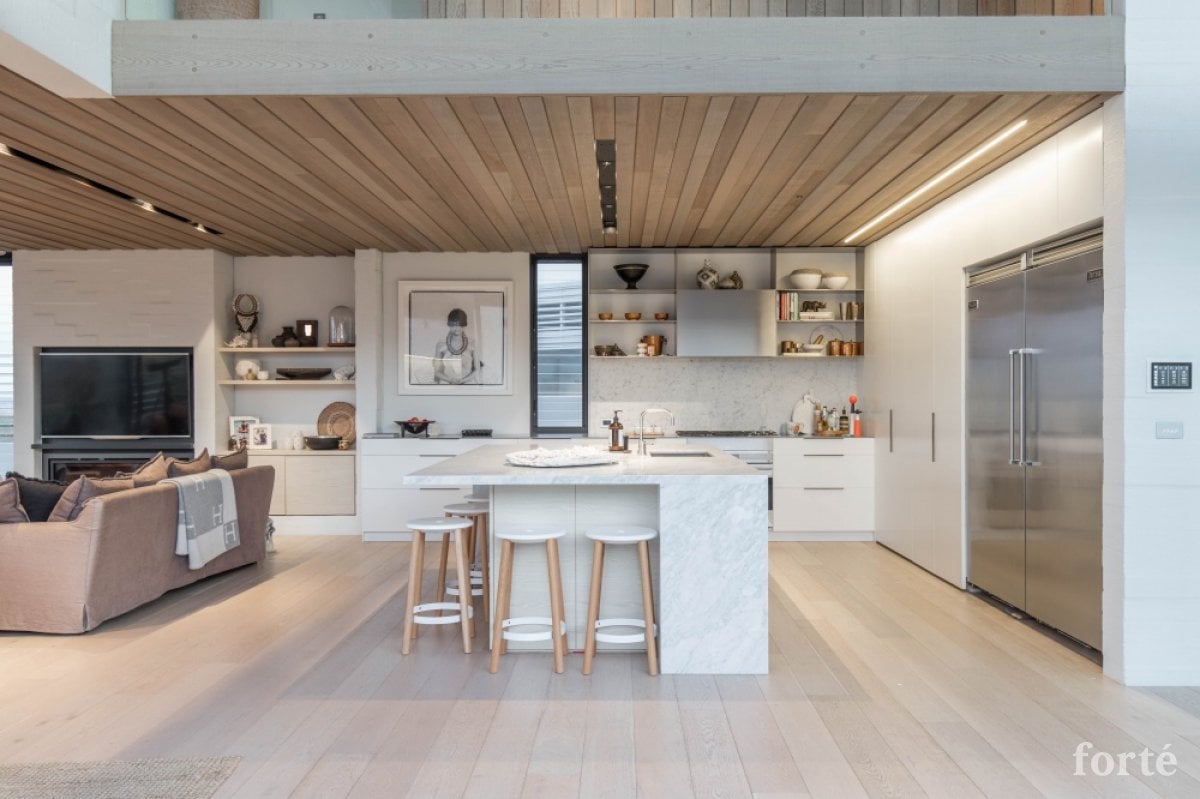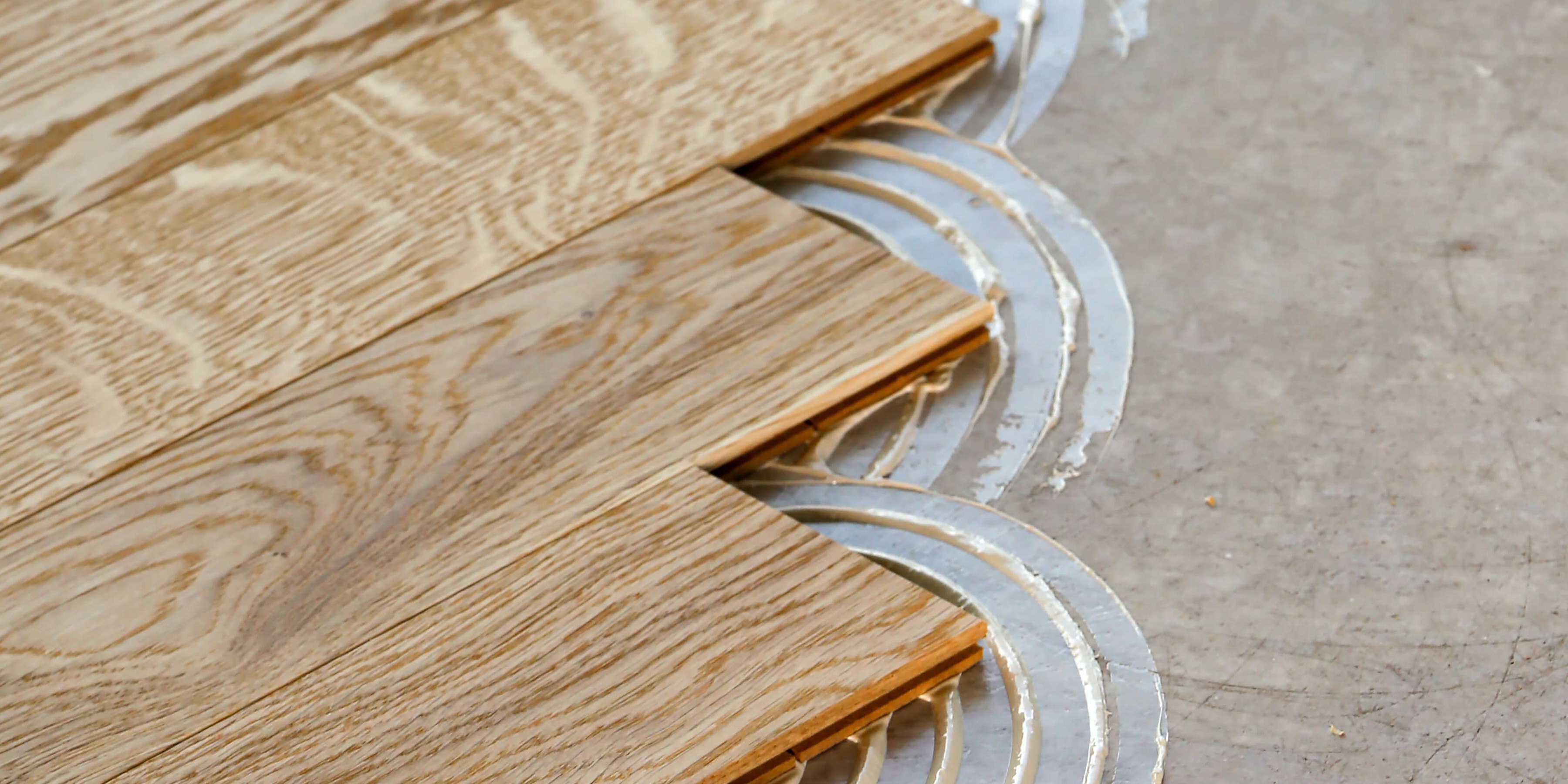Why engineered wood flooring is better than solid wood flooring
Blog |
.png?width=878&height=586&name=Solid%20vs%20engineered%20wood%20flooring%20(1).png)
Selecting the perfect flooring product is critical for longevity, cost, maintenance, and visual appeal. Due to its historic popularity, many people have a preconceived idea that solid wood flooring is a better choice. However, engineered wood floors are superior in durability, stability, and design flexibility.
In this article, we explain the 7 reasons to choose engineered wood flooring and outline why it is the better choice for New Zealand interiors.
What is solid wood flooring?
Solid wood flooring is 100% hardwood, which means each plank is manufactured from one single piece of wood. The wood can be resanded and refinished multiple times. Unfortunately, solid wood planks are limited in terms of length and width and are also less stable, with more risk of cupping and warping.
What is engineered wood flooring?
Engineered wood has a wear layer of solid hardwood, also known as a veneer. This top layer is fixed to a multi-layered core of stable timber, typically made from multiple layers of economical timber like plywood, pine, or hevea.
These layers are glued cross-directionally, pressed together for maximum durability and strength, and joined with a tongue and groove profile. Compared to solid timber floors, engineered wood is reliable, robust, and available in longer, wider planks.
Authentic timber
Compared to vinyl and laminate flooring, real timber and engineered wood both add authentic grains and warm tones to an interior space. However, engineered hardwood is also easier to install, more durable, and more cost-effective. It offers the same visual appeal as solid hardwood but, due to the reinforced core and simpler installation, it costs far less.
How to install engineered wood floors
If installed using the floating method, engineered wood floors may sound more hollow underfoot. However, if installed using the glue-down method, they will have the same sound and feel as solid timber floors.
7 reasons to choose engineered wood over solid wood flooring
1. Sustainability
Hardwood planks consist of a solid piece of wood, requiring a significant amount of natural hardwood to manufacture. The planks cannot be resanded below the tongue and groove, which means a large portion of this is wasted timber.
In engineered wood planks, the core is made of a more common and fast-growing timber. With approximately one-third of the amount of slow-growing hardwood compared to solid wood of the same dimensions, this makes it a far more sustainable option.
Discover the environmental benefits of engineered wood.
2. Cost
Solid wood flooring is supplied as raw planks, requiring sanding and finishing on the job site. This increases the total cost of the floor, especially when multiple coats need to be applied and dried over several days.
In comparison, engineered wood flooring is available prefinished from the factory, eliminating the need for sanding and finishing on-site. The planks arrive pre-coloured and coated to factory standards, making them far more cost-effective and consistent. If you have a tight budget, engineered timber is also available with a thinner veneer.
Additionally, the core backing of engineered wood is made with far more economical timber, such as plywood or pine. This makes each plank considerably more cost-effective than a plank made with solid hardwood.
3. Plank dimensions
The width and length of solid wood planks are limited to reduce the risk of expanding and contracting. Engineered wood is much stronger and more stable, meaning larger planks can be achieved. This makes your interior space feel bigger and elevates the aesthetic, giving it an upscale and modern feel.
4. Installation
Due to variances in joint profiles, solid timber is often difficult to install. There is also a higher risk of the boards absorbing moisture, causing the joints to swell, bow, or cup. When this happens, installation becomes difficult and time-consuming.
On the other hand, engineered flooring is straight and machined to a higher standard, with consistent joint profiles. The tongue and grooves tend to maintain their size and do not swell, meaning they fit together easily. With our engineered wood flooring, the glue-down installation is quick, easy, and sturdy. This also allows you to re-sand your floors and give them additional decades of life.
5. Waste
With solid timber flooring, a percentage will be wasted due to cracks, loose knots, or other structural defects. With any engineered flooring, every piece of flooring has been strictly graded, with no structural defects or characteristics outside of the grade that you ordered.
6. Stability
Solid wood is prone to expanding and contracting when exposed to moisture, causing irreversible damage. In New Zealand’s humid climate, this is common, resulting in the planks cupping or warping, generally needing to be replaced. Fortunately, engineered wood flooring has a stronger moisture barrier and increased resistance to humidity.
7. Lifespan
If engineered wood flooring is installed using the glue-down method, the wear layer can be re-sanded and refinished several times, just like solid timber.
How to choose the best wood flooring
Here at Forté, we have years of experience researching how to make great quality engineered wood flooring. That’s why we use a non-toxic finish, with low VOC levels, no added formaldehyde, and no unappealing smells. Our flooring is available in a wide range of grains, tones, and grades to suit any interior design.To help you decide on the right flooring for your project, we’ve created a helpful guide. Download your free copy for advice on the following:
-
Types of wood flooring
-
Unfinished vs prefinished flooring
-
Suitable environments for wood flooring
-
Laminate flooring
-
Parquet flooring
Visit one of our Showrooms
If you have any queries about our products or need help with your project, we can provide you with expert advice. Visit one of our showrooms or book a consultation with our flooring experts today.



